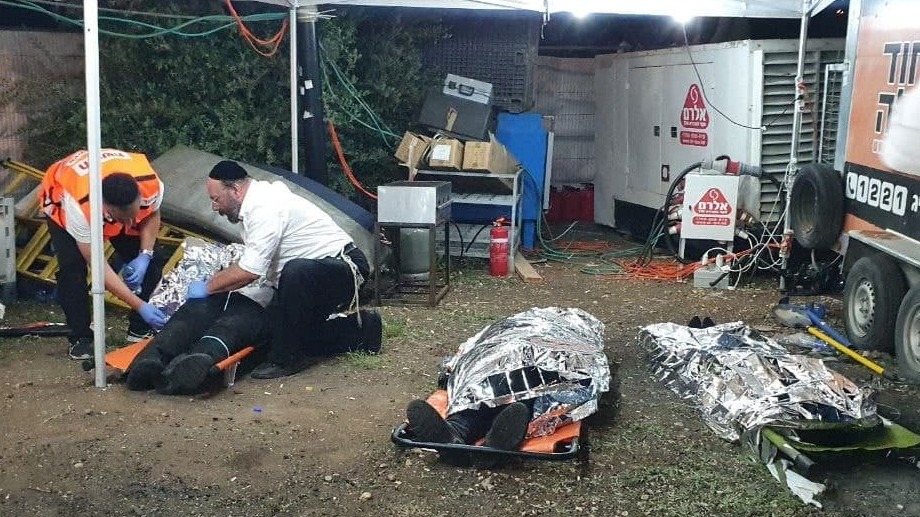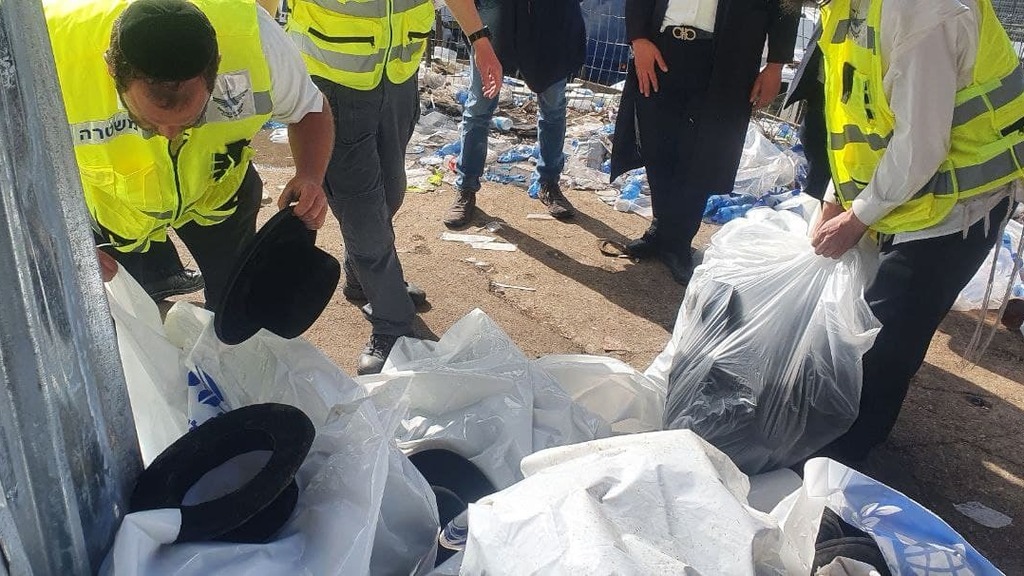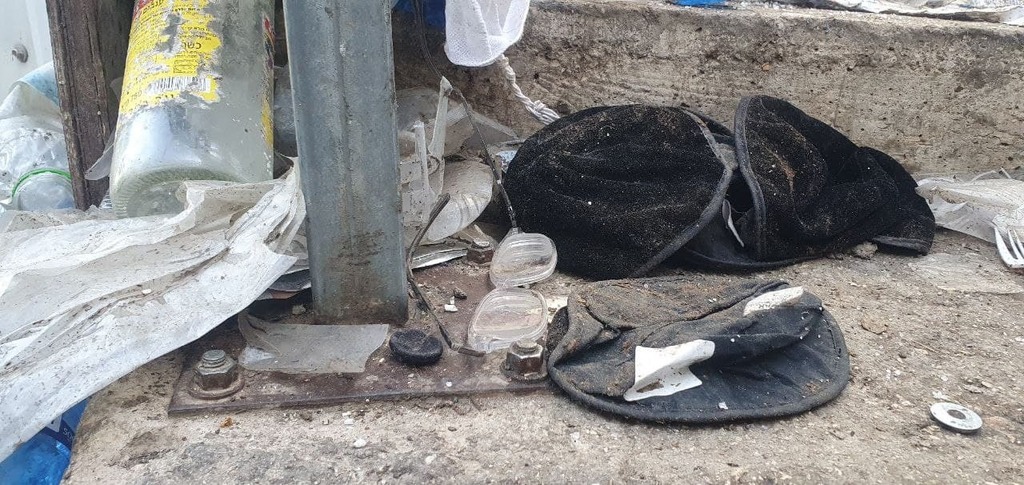Ynet photographer Moshe Mizrahi was sent to document the Yom Hilula — a traditional celebration of Lag BaOmer — at Mount Meron where Rabbi Shimon bar Yochai is buried.
Once there, he had no idea the mass festivities that were supposed to signal a return to normalcy after a year of pandemic restrictions, would turn into Israel's biggest civilian tragedy in history.
7 View gallery
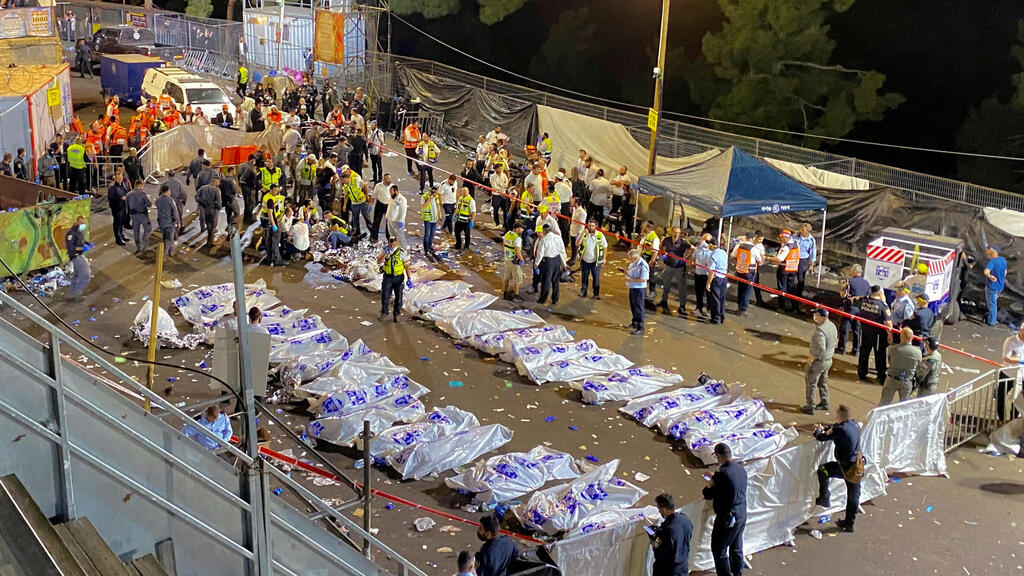

Bodies laid out on stretchers at Mount Meron on the night of the disaster
(Photo: Reuters)
Thursday was a sunny and warm day. Around 4pm, Israelis from all walks of life began to flock to Mount Meron, and at around 6pm, the number of people at the site had already reached 100,000.
On Mount Meron, no matter where you were, you could hear different music playing, which symbolized the joy of Lag BaOmer.
Every few meters, there were tents set up, offering food and drinks, first aid stations and giant signs so you would not be confused for a moment as to where you were. On one of the roofs, there were worshippers who were filling the massive chimney with olive oil, pouring bottle after bottle.
On every corner, you could also see police officers monitoring the situation and observing the festivities.
At 8pm, the Rebbe of Boyan Nachum Dov Brayer lit the traditional bonfire. The music became even louder and was now accompanied by traditional dancing. A singer who was playing at the event with a live band of Haredi musicians would occasionally stop to deliver an update on the festivities.
At 12:55am, he stopped to tell rescue teams stationed across the mountain to help out "at the stairs".
At 12:57am, a medic came out of the crowd carrying a small child in his arms. "Do not worry, you'll live," he was overheard telling the child. He put the child down inside a structure nearby and yelled into his walkie-talkie: "A mass-casualty event in Area 41."
7 View gallery
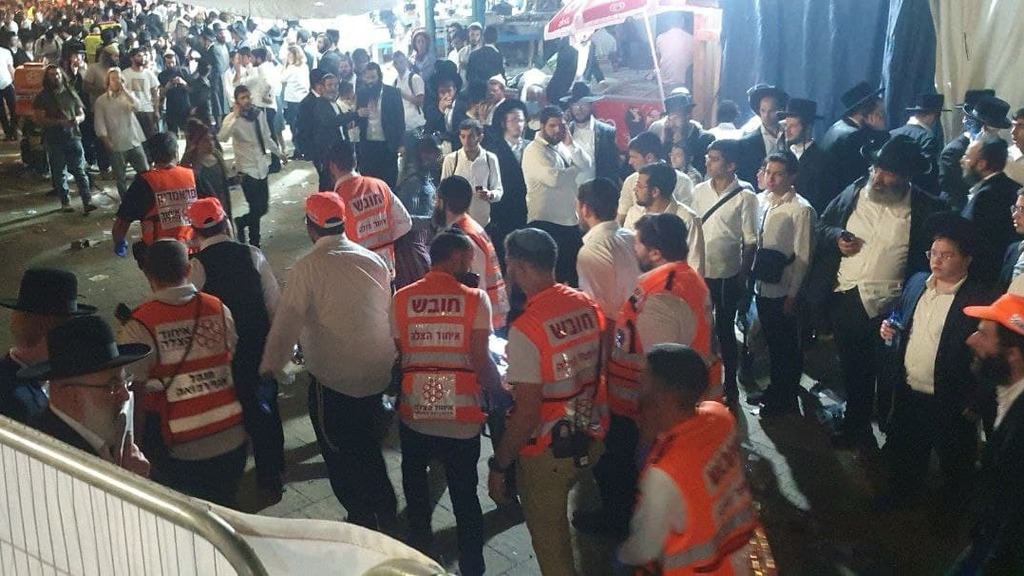

Paramedics carry the wounded during the disaster at Mount Meron
(Photo: Moshe Mizrahi)
At 12:58am, I turn on my camera and start filming in a static position. I couldn't really comprehend what I was filming as I saw stretcher after stretcher of unconscious people being pulled out of the crowd. In between stretchers, you could see people taking deep breaths after clearly being on the verge of suffocating moments earlier.
I was trying to get through to the Ynet production team to give them an update on what was going on, but the phone signal at Mount Meron was non-existent. Luckily, the barely-there internet connection allowed me to make a call through WhatsApp. "Wake everyone up, this is an event like no other," I yelled into the phone.
I then go back to observing and documenting the unprecedented events happening around me.
Right in front of me, I see a young boy falling to the ground and losing consciousness. I see another one nearby falling down unconsciously, while the masses are stepping over him. It is no longer possible to continue filming, so I put down my camera, put on my United Hatzalah vest and rush to aid the victims.
It wasn't hard to understand that no one appeared to be in charge of the events as the situation slipped into complete anarchy. I catch a paramedic running around the place and order him to bring 10 first aid kits. Then, I line up several other paramedics at the scene and give them orders: "you perform massages, you monitor the defibrillator, you perform CPR".
Soon, a row of ten stretchers formed right in front of us. All ten people were being resuscitated, and all ten were dancing to the tune of "Bar Yochai Song" just moments earlier.
At this point, having regular paramedics at the scene was not enough, we needed a doctor or a senior medical authority. I went to check each aid station until I finally found one.
We ask him whether we should continue resuscitating the ten people on the stretchers. He inspects each stretcher and says: "Stop, cover them. Their dignity must be maintained. Cover them and bring them inside the tent so they will not be on display."
At 1:37am, the mountain goes silent as the music stops completely everywhere and the only thing you could hear is someone yelling into a microphone from time to time: "Clear the way for rescue teams".
Meanwhile, the paramedics at the scene are trying to stomach the disaster.
I caught on camera two United Hatzalah drivers — brothers Yitzhak and Natan Meirav from Safed — hugging and crying on each other's shoulders. Neither one of them was prepared for what they saw there that night. United Hatzalah rescue teams have some of the best professionals in the field. People who have already dealt with mass-casualty events many times before, but none came close to this.
The Meirav brothers were not alone. On every corner, you could see people hugging and crying. Most of them probably had never even met prior to that night, but they were all willing to lend one another a shoulder to cry on.
7 View gallery
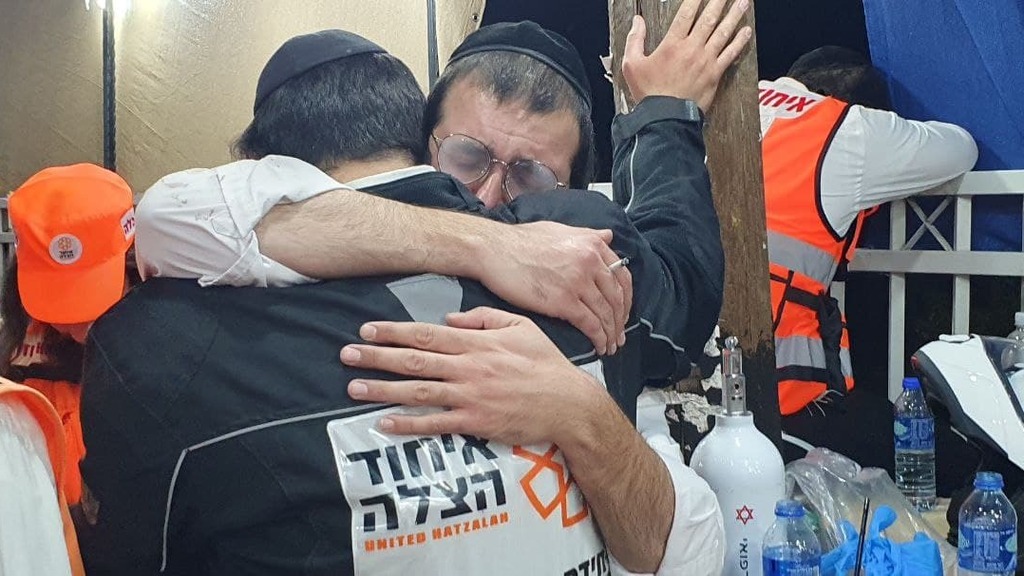

United Hatzalah paramedics, Yitzhak and Natan Meirav, hug in tears while treating victims at Mount Meron
(Photo: Moshe Mizrahi)
After a while, I return to my journalistic duties and begin a live broadcast, with tons of questions going through my head. Chief among them was who is responsible for this, and could this have been avoided? I was less interested in who was at the top of the pyramid in terms of accountability and more in who was the person who had allowed to hold two mass bonfire-lighting ceremonies at the same time, which eventually created the stampede.
I eventually leave Mount Meron and at around 5am, lie down on a mattress and fall asleep for an hour, with tears rolling down my face. As soon as I wake up, I head back to the scene of the disaster to try to rationally understand what I had seen there just a few hours earlier.
On every corner, I saw pieces of clothing, glasses, hats, skullcaps, watches and phones belonging to those who were singing and dancing in ecstasy only a few hours ago and now, they are dead.
7 View gallery
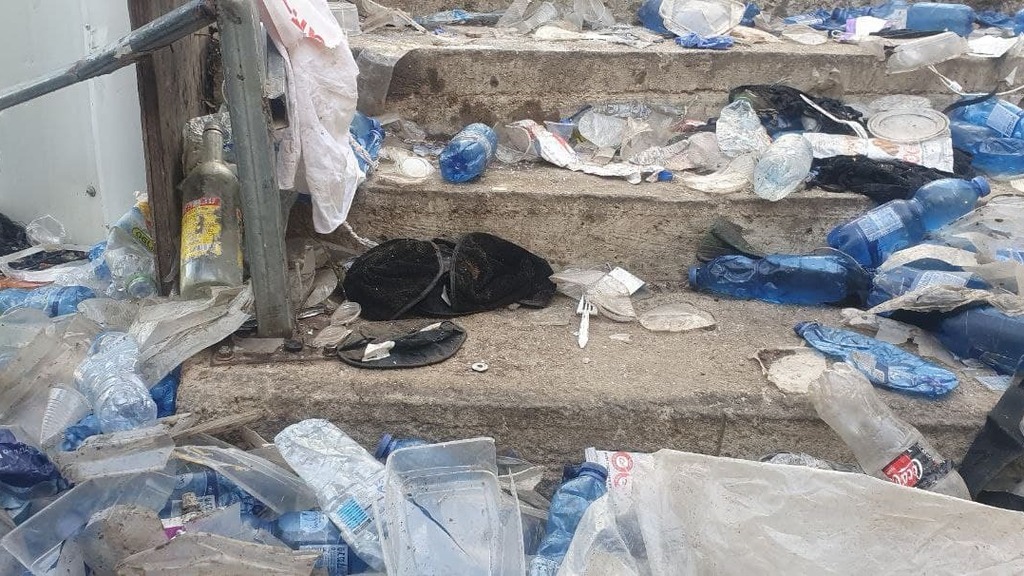

Bottles of water and pieces of clothing belonging to the victims at the scene of the disaster
(Photo: Moshe Mizrahi)
Just hours later, I was already taking pictures of Israel's senior officials who came to the scene to shake off the responsibility for the tragedy. When some members of the ultra-Orthodox community at the scene shouted "killer" at Prime Minister Benjamin Netanyahu, everyone was in disbelief.
The blame, however, does not lie solely with him. The blame must be pointed evenly among everyone involved in the handling of the event. But no one wants to be held accountable. Officials tend to take credit only for things that are going well.
Almost two days have passed since the disaster, and my body is still trying to regain strength to move forward. The disaster called "Mount Meron 2021" and its victims will forever be seared into our memories.
May they rest in peace.
Moshe Mizrahi is a Ynet photographer and a United Hatzalah paramedic.


